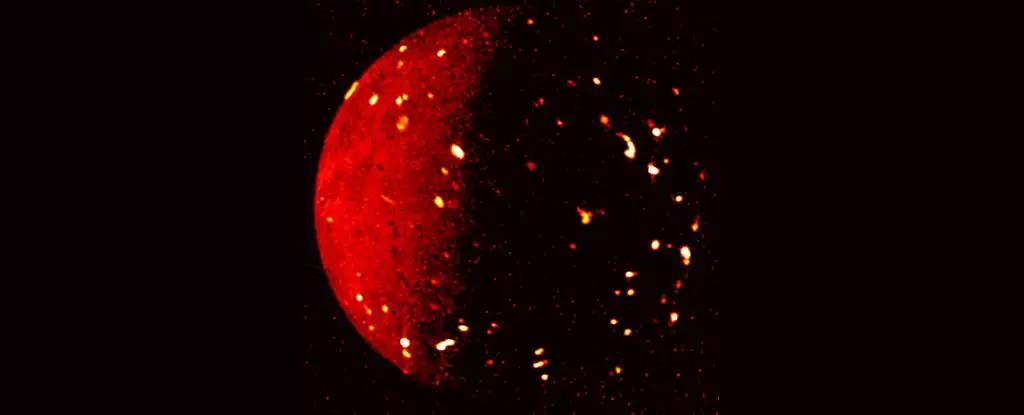Jupiter’s moon Io has long been hailed as the most volcanically active world in our Solar System. With approximately 150 of its 400 active volcanoes erupting at any given time, Io is a true spectacle of constant lava and gas emissions. Thanks to the Juno probe’s Jovian Infrared Auroral Mapper (JIRAM), scientists have gained valuable insights into the volcanic landscape of Io. The high-resolution infrared images captured by JIRAM have revealed that the entire surface of Io is dotted with lava lakes contained within caldera-like structures. According to astrophysicist Alessandro Mura, an estimated 3 percent of Io’s surface is covered by these molten lava lakes.
The volcanic activity on Io is a result of a complex interplay of gravitational forces. Io’s elliptical orbit around Jupiter causes varying intensities of attraction between the moon and the planet over time. Additionally, the gravitational influence of Jupiter’s other Galilean moons – Callisto, Europa, and Ganymede – further contributes to the stress on Io’s interior. This stress results in the generation of heat that manifests as volcanism on the moon’s surface. While scientists have a decent understanding of these dynamics, there are still many mysteries surrounding how volcanism appears on Io’s surface.
The Juno probe’s recent flybys of Io have provided unprecedented views of the moon’s volcanic features. By collecting data up close, Juno has allowed scientists to observe plumes of volcanic eruptions and lakes of lava on Io with remarkable detail. One of the key findings from the infrared observations captured by JIRAM is the presence of lava lakes characterized by a ring of exposed liquid lava surrounded by high walls. These observations have unveiled the most dominant form of volcanism on Io, showcasing the continuous cycling of magma within these lava lakes.
The data analyzed from Juno’s close encounters with Io have shed light on the intricate volcanic processes at play on the moon. It appears that the lava lakes on Io are constantly in flux, with magma entering and exiting through a reservoir below the surface. The rise and fall of these lava lakes cause the central crust to interact with the molten lava, resulting in the formation of lava rings around the perimeter of the lakes. This continuous cycle of magma movement within the lava lakes explains why eruptions are not commonly observed on the surface of Io.
The ongoing investigations into Io’s volcanic activity have revealed a wealth of new information about the moon’s geology and surface features. With the help of advanced instruments like JIRAM on the Juno probe, scientists are unraveling the mysteries of Io’s fiery landscape and gaining a deeper understanding of the complex processes that drive volcanic activity on this enigmatic moon of Jupiter.


Leave a Reply